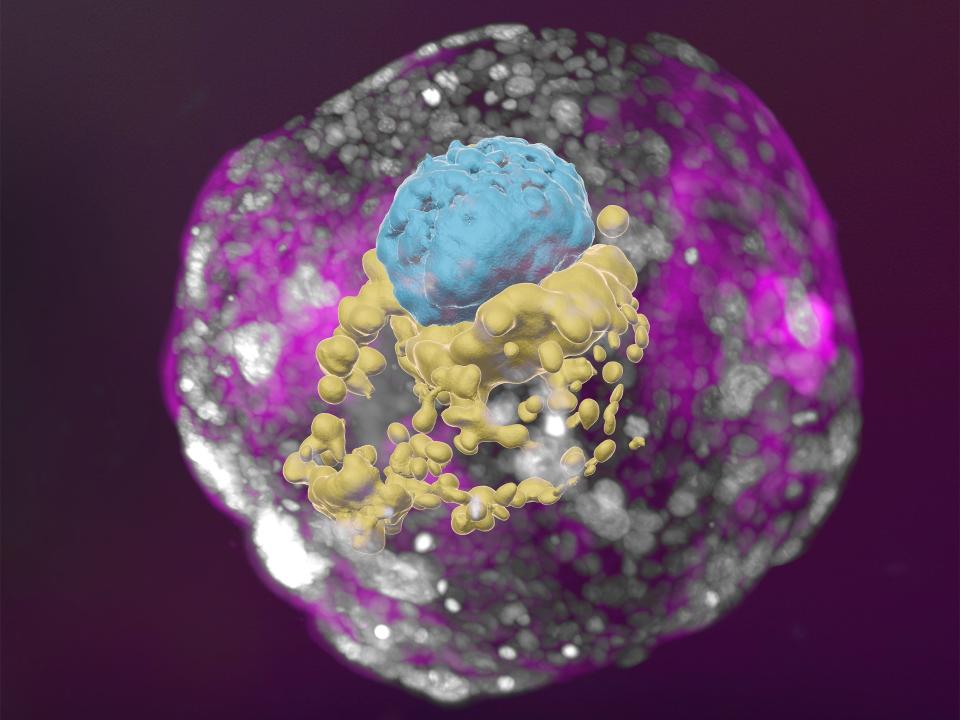A human embryo grown in a lab without a sperm or egg could be a revolutionary new way to test medicines that may help prevent miscarriage and genetic diseases
Scientists used stem cells to create a model of an embryo in the lab without sperm or egg.
The model embryo released the same hormones that trigger positive pregnancy tests.
Researchers hope to use this model to understand early development, miscarriage, and genetic disease.
We know a lot about how babies are made, but not everything. Scientists understand surprisingly little about the early days of embryo growth, when our cells organize and begin to form our bodies.
Researchers brought us one step closer to understanding those early days by making a model of a human embryo in the lab, without using sperm or eggs. They published their findings in the journal Nature.
"The drama is in the first month, the remaining eight months of pregnancy are mainly lots of growth," Jacob Hanna, a co-author of the study who researches molecular genetics at the Weizmann Institute of Science, said in an Institutional press release.
Most miscarriages happen within the first 11 weeks of a pregnancy, according to Mayo Clinic. These models could help scientists understand what can go wrong early on in these developmental stages in order to try to prevent them, Hanna said in the press release.
He also said the models could be used to determine how genetic diseases develop as well as birth defects.
How scientists grew a model human embryo without a sperm or egg
In order to accomplish this feat, the team turned to stem cells. Stem cells are cells that form other, more complex cell types depending on what messages the body sends them. The Mayo Clinic calls them "the body's raw materials."
Starting with stem cells, the researchers turned them into types of cells that make up a human embryo, from placenta to fetus. They then mixed those cell types together and left them alone.
Magically, as if guided by mini magnets, some of the cell types organized themselves within their dishes in the configurations that you would see in a human embryo.
"I give great credit to the cells — you have to bring the right mix and have the right environment and it just takes off," Hanna told the BBC. "That's an amazing phenomenon."

Supported by the conditions in the lab, the researchers let the cells grow for 14 days, which is the legal limit for embryo research in many countries.
The clump mimicked an actual embryo so effectively that it triggered a positive pregnancy test, according to the press release.
Scientists aren't aiming to put any of these pseudo-embryos into humans, the BBC reported.
In addition to better understanding miscarriages, genetic diseases, and birth defects, the researchers aim to use these embryo models for experiments that wouldn't be possible with real human embryos, like figuring out which drugs are safe to take while pregnant.
Read the original article on Business Insider

